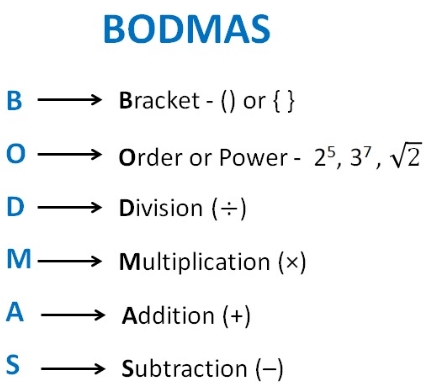
CBSE Class 6 Notes Chapter 1: CBSE Class 6 Notes Chapter 1 Knowing Our Numbers, introduces students to the importance of numbers in everyday life. It covers concepts like comparing numbers, forming the greatest and smallest numbers using given digits, and the Indian and International systems of numeration.
Students learn how to read and write large numbers, estimate sums and differences, and use rounding off for approximations. The chapter also emphasizes the use of commas to read numbers correctly. Additionally, it introduces the concept of Roman numerals and their application, along with basic operations involving numbers.CBSE Class 6 Maths Notes Chapter 1 Overview
CBSE Class 6 Notes Chapter 1 Knowing Our Numbers, introduces students to the world of numbers and their significance in daily life. The chapter begins by teaching how to compare and arrange numbers, helping students understand the concept of ascending and descending order. It explains how to form the greatest and smallest numbers from a set of digits. The chapter covers the Indian and International systems of numeration, enabling students to read and write large numbers, including the use of commas for clarity. Students are introduced to the concept of estimation for quickly calculating sums, differences, and products using rounding off techniques. The chapter also teaches them how to estimate outcomes of operations for everyday use. Roman numerals, an ancient number system, are also explained in this chapter, providing a historical perspective on how numbers were represented in earlier times. By the end of the chapter, students develop a strong foundational understanding of large numbers and basic arithmetic operations.CBSE Class 6 Maths Notes Chapter 1 PDF Download
Below we have provided CBSE Class 6 Notes Chapter 1 Knowing Our Numbers pdf for the ease of the students so that they can download it and access it without internet.CBSE Class 6 Notes Chapter 1 PDF
CBSE Class 6 Maths Notes Chapter 1 Knowing Our Numbers
Below is the CBSE Class 6 Notes Chapter 1 Knowing Our Numbers -Introduction to Numbers
- Numbers are arithmetic values.
- Numbers are used to convey the magnitude of everything around us.
Comparing Numbers
Comparing numbers when the total number of digits is different
By magnitude, the number with the greatest number of digits is the largest number, and the number with the fewest digits is the lowest. For instance: Think about these numbers: 22 123 9 345 3005. 3005 is the largest number (four digits), and 9 is the smallest (single digit).Comparing numbers when the total number of digits is the same
The greatest number is the one with the highest leftmost digit. If this digit is the same as well, we move on to the next leftmost digit, and so forth. Take 340, 347, 560, 280, and 265 as examples. When comparing 265 and 280, 6 is less than 8, indicating that the greatest number is 560 (leftmost digit is 5). The smallest number is 265.Ascending and Descending Order and Shifting Digits
Ascending Order and Descending Order
Ascending Order : Arranging numbers from the smallest to the largest is called ascending order. For example, if you have the numbers 134, 56, 89, and 12, the ascending order would be 12, 56, 89, 134.
Descending Order : Arranging numbers from the largest to the smallest is called descending order. Using the same numbers (134, 56, 89, and 12), the descending order would be 134, 89, 56, 12.
Shifting Digits involves rearranging the digits of a number to form new numbers. For instance, if you have the number 245, shifting the digits could result in new numbers like 524 or 452. This technique can be used to form the largest or smallest number from a given set of digits.
How many numbers can be formed using a certain number of digits?
If a particular number of digits is provided, we can create many numbers with the same number of digits by swapping the digits' locations. For instance: Four digits come to mind: 3, 0, 9, 6. With these four digits, the largest number that can be obtained is 9630, and the smallest number that can be obtained is 3069. (A 4-digit number will become a 3-digit number since it cannot contain 0 as the leftmost digit.)Shifting Digits
A number's magnitude can be adjusted by shifting the digits' positions. Let's use the number 789 as an example. 987, which is bigger than 789, is what we obtain when we switch the digit at the hundredth place with the digit at the units place. Likewise, if we swap the units and tenths places, we have 798, which is higher than 789.Place Value
- Each place in a number has a value of 10 times the place to its right.
- Example: Consider number 789. (i) Place value of 7 = 700 (ii) Place value of 8 = 80 (iii) Place value of 9 = 9
Larger Numbers and Estimates
Introducing Large Numbers
The place value makes it simple to represent large numbers. As you can see below, it goes in ascending sequence.| 8 digits | 7 digits | 6 digits | 5 digits | 4 digits | 3 digits |
| 10 million (1 crore) | 1 million (10 lakhs) | Hundred Thousands (1 lakh) | Ten Thousands | Thousands | Hundreds |
Estimation
In cases where the figure is extremely huge, we round it down to the closest reasonable value. We refer to this as estimate. The degree of accuracy needed and the urgency of the estimate determine the estimation process. Example -| Given Number | Appropriate to Nearest | Rounded Form |
| 75847 | Tens | 75850 |
| 75847 | Hundreds | 75800 |
| 75847 | Thousands | 76000 |
| 75847 | Tenth thousands | 80000 |
Estimating Sum or Difference
- Estimations are used in adding and subtracting numbers.
- Example of estimation in addition: Estimate 7890 + 437. Here 7890 > 437. Therefore, round off to hundreds. 7890 is rounded off to 7900 437 is rounded off to + 400 Estimated Sum = 8300 Actual Sum = 8327
- Example of estimation in subtraction: Estimate 5678 – 1090. Here 5678 > 1090. Therefore, round off to thousands. 5678 is rounded off to 6000 1090 is rounded off to – 1000 Estimated Difference = 5000 Actual Difference = 4588
Estimating Products of Numbers
- Round off each factor to its greatest place, then multiply the rounded-off factors.
- Estimating the product of 199 and 31: 199 is rounded off to 200 31 is rounded off to 30 Estimated Product = 200 × 30 = 6000 Actual Result = 199 × 31 = 6169
BODMAS
BODMAS is a mathematical rule used to determine the order of operations when solving expressions that involve multiple arithmetic operations. The acronym stands for:
B : Brackets (solve expressions inside brackets first)
O : Orders (powers and roots, such as exponents and square roots)
D : Division (solve division next)
M : Multiplication (solve multiplication after division)
A : Addition (solve addition after multiplication and division)
S : Subtraction (solve subtraction last)
BODMAS
Example :
[(5 + 1) × 2] ÷ (2 × 3) + 2 – 2 = ? [(5 + 1) × 2] ÷ (2 × 2) + 2 – 2….{Solve everything which is inside the brackets} = [6 × 2] ÷ 6 + 2 – 2…..{Multiplication inside brackets} = 12 ÷ 6 + 2 – 2……{Division} = 2 + 2 – 2……{Addition} = 4 – 2…….{Subtraction} = 2Using brackets
- Using brackets can simplify mathematical calculations.
- Example:
- 7 × 109 = 7 × (100 + 9) = 7 × 100 + 7 × 9 = 700 + 63 = 763
- 7 × 100 + 6 × 100 = 100 × (7 + 6) = 100 × 13 = 1300
Roman Numerals
- Digits 09 in Roman are represented as I, II, III, IV, V, VI, VII, VIII, IX, X
- Some other Roman numbers are : I = 1, V = 5 , X = 10 , L = 50 , C = 100 , D = 500 , M = 1000
Rules for Writing Roman Numerals
A symbol's value is added each time it appears if it is repeated. For instance, XX = 10 + 10 = 20. There are never more than three repetitions of a symbol. X, L, and D, however, are never repeated symbols. A smaller sign's value is added to the greater symbol's value if it is written to the right of a larger symbol. 7. For instance, VII = 5 + 2. A smaller sign's value is deducted from the greater symbol's value if it is written to the left of a larger symbol.- Example: IX = 10 – 1 = 9.
- Some examples : 105 = CV , 73 = LXXIII and 192 = 100 + 90 + 2 = C XC II = CXCII
Benefits of CBSE Class 6 Maths Notes Chapter 1
The CBSE Class 6 Notes Chapter 1 Knowing Our Numbers offer several benefits for students:Strong Foundation : The notes help students build a solid understanding of number concepts, including reading, writing, and comparing large numbers.
Numeration Systems : They explain the Indian and International systems of numeration, ensuring clarity on how to use and interpret large numbers correctly.
Estimation Skills : Students learn to estimate sums, differences, and products, a valuable skill for solving real-world problems quickly and efficiently.
Problem Solving : By teaching techniques like rounding off and forming the greatest and smallest numbers, students enhance their problem-solving abilities.
Roman Numerals : The introduction of Roman numerals expands their knowledge of ancient number systems, adding to their historical and cultural understanding.
Confidence in Basic Operations : Regular practice through examples and exercises boosts their confidence in performing basic arithmetic operations with large numbers.













